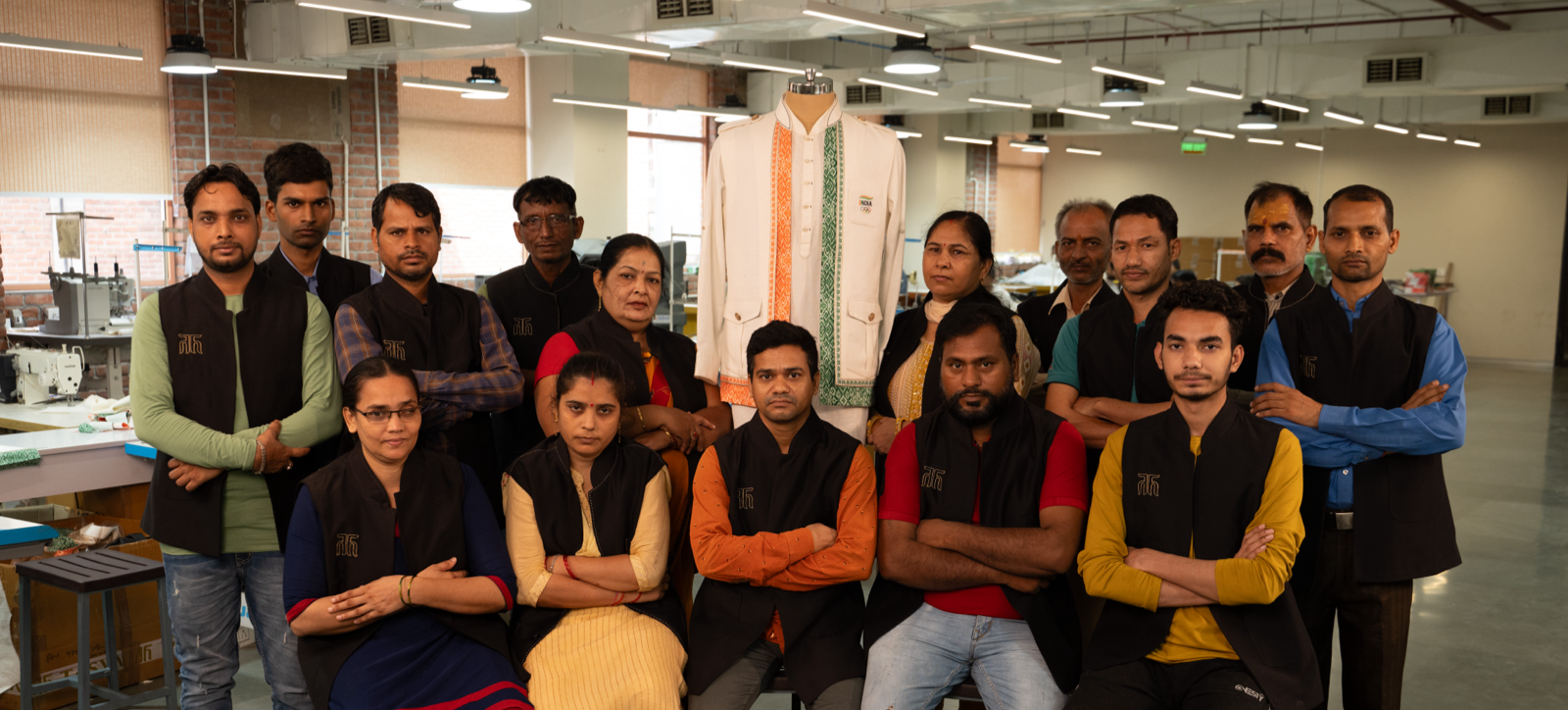
A Parade of Pride: Iconic Olympic Ceremonial Dresses Through Time
The Olympic Games are a stage for athletic prowess and national pride expressed through iconic ceremonial dresses. Explore some of the most unforgettable ones that have walked the opening ceremony runway!

The Olympic Games transcend athletic competition; they're a vibrant tapestry woven from national pride, cultural heritage, and fashion. The opening and closing ceremonies are a visual spectacle, where athletes transform into national ambassadors, proudly displaying their colours and traditions through their ceremonial dresses.
Let's embark on a journey through time and explore ten iconic designs that have left a lasting impression on the Olympic stage, along with the stories behind them:
- 1924 Winter Chamonix Olympics: Norway's Ode to Winter Wonderlands
 Inspiration: Practicality meets style in Norway's 1924 Winter Olympics uniform. The woollen parkas and matching hats with red and white accents kept athletes warm in the French Alps while reflecting the colours of the Norwegian flag. This simple yet functional design set the precedent for future Winter Olympic uniforms.
Inspiration: Practicality meets style in Norway's 1924 Winter Olympics uniform. The woollen parkas and matching hats with red and white accents kept athletes warm in the French Alps while reflecting the colours of the Norwegian flag. This simple yet functional design set the precedent for future Winter Olympic uniforms.
- 1936 Berlin Olympics: The White Simplicity of Riefenstahl's Vision
Inspiration: Designed by Leni Riefenstahl, a controversial filmmaker associated with the Nazi regime, the 1936 Berlin Olympic uniforms were shrouded in complexity. The simple white dresses with clean lines and flowing capes echoed the ideals of classical Greece. However, the stark contrast to the dark political backdrop of the time sparked debate. While elegant, these dresses lacked the vibrant national identity that would become a hallmark of future Games.
- 1964 Tokyo Olympics: A Celebration of Japanese Heritage
Inspiration: A marked shift from the muted tones of 1936, the 1964 Tokyo Olympics saw a dazzling display of Japanese heritage. Designed by Hanae Mori, a rising star in Japanese fashion, the athletes donned a shorter, playful take on the classic kimono. Vibrant colours and traditional motifs like cranes and fans celebrated Japan's rich culture while showcasing a modern aesthetic, influencing future Olympic fashion choices.
- 1988 Seoul Olympics: A Fusion of East and West
Inspiration: The 1988 Seoul Olympics marked a trendsetting moment for South Korea. Athletes wore a unique combination of traditional Hanbok jackets with modern, pleated skirts. The bold colour palette, featuring vibrant pinks and blues, further emphasised cultural fusion. This innovative design captured the spirit of a nation embracing modernity while cherishing its heritage, inspiring other countries to explore similar blends in their ceremonial attire.
- 1992 Barcelona Olympics: Gaudi's Whimsical Influence

Inspiration: Spanish designer Lydia Delgado took inspiration from the works of Antoni Gaudi for the 1992 Barcelona Olympics outfits. The dresses featured bold, geometric shapes, vibrant colours, and whimsical patterns reminiscent of Gaudi's iconic architecture. The playful, avant-garde designs reflected the city's artistic spirit and stood out from the more traditional uniforms of other countries. This bold choice set a new standard for creative expression in Olympic wear.
- 2004 Athens Olympics: A Return to Greek Roots

Inspiration: For the 2004 Athens Olympics, the host nation embraced its rich history and mythology. The Greek athletes donned outfits that evoked the spirit of ancient Greece. Think flowing white tunics for men and draped dresses for women, reminiscent of togas worn in antiquity. The use of laurel wreaths, a symbol of victory in ancient Greece, further emphasised the connection to the past. This design choice was a powerful statement, signifying a return to the birthplace of the Olympic Games.
- 2012 London Olympics: A Nod to British Fashion Icons

Inspiration: Stella McCartney, a leading figure in British fashion, designed the Team GB uniforms for the 2012 London Olympics. She created a modern, sporty look with clean lines and a patriotic colour palette of red, white, and blue. The outfits also incorporated subtle nods to British fashion icons like Mary Quant and Vivienne Westwood, reflecting the nation's rich design heritage. This approach of honouring national identity through renowned designers became increasingly popular after the London Games.
- 2016 Rio Olympics: A Celebration of Brazilian Culture
Inspiration: The 2016 Rio Olympics ceremony was a vibrant explosion of Brazilian culture. The athletes wore outfits designed by Lenny Niemeyer, a grandson of the iconic architect Oscar Niemeyer. The designs incorporated geometric patterns and bold colours reminiscent of Brazilian art and architecture. The use of lightweight, breathable fabrics like linen was perfect for the Rio summer heat.
- 2020 Tokyo Olympics: A Sustainable Statement
Inspiration: Sustainability took centre stage at the 2020 Tokyo Olympics. The Japanese team's uniforms were crafted from recycled polyester, a significant step towards eco-conscious fashion in the sporting world. The uniforms, designed by Yohji Yamamoto, featured a deconstructed kimono silhouette with a modern, minimalist aesthetic. This choice resonated with Japan's emphasis on innovation and environmental responsibility.
- A Glimpse into the Future: India Steps onto the World Stage
While these iconic designs showcase Olympic attire's rich history and cultural expression, India is poised to make its mark on the global stage. This year, at the 2024 Paris Olympics, Tasva takes immense pride in being the official designer partner for Team India's ceremonial dress!
This prestigious collaboration presents a unique opportunity to showcase India's rich cultural heritage on a global stage, all while prioritising comfort and style for our esteemed athletes. The uniform for Team India is a captivating blend of classic Indian attire and contemporary design elements. It embodies the spirit of modern India, a nation that celebrates its historical roots while embracing innovation.
As the Indian contingent will sail past on the Siene river, the world will witness a unique blend of heritage and innovation. This will be a defining moment for Indian fashion on the global stage, a chapter proudly written by Tasva and embodied by the grace and determination of Team India.












